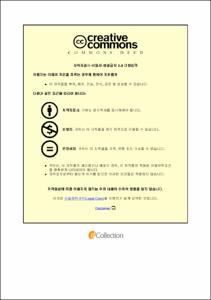曾鞏의 ‘亭臺樓閣記’ 연구
- Alternative Title
- A Study Of Zeng Gong’s Pavilions Narrative Prose
- Abstract
- 北宋은 亭臺樓閣記의 전성기이자, 이러한 記文 발전의 성숙기이기도 하다. 北宋의 亭臺樓閣記는 문학가들이 건축의 주체를 기술할 뿐만 아니라 기술하는 주체를 이용하여 의론하고, 정서를 나타내며 문학가의 독특한 개인 사상을 표현하는 방향으로 발전하였다. 亭臺樓閣記는 기탁의 매개체가 되었으며, 당시 문학가들이 자신의 사상·감정·정신·추구, 그리고 현실과 이상을 표현하는 자기 조절의 공간부호였다. ‘당송산문팔대가’중 歐陽脩·蘇軾·曾鞏·王安石·蘇轍은 北宋 亭臺樓閣記의 가장 걸출한 인물이다.
曾鞏의 亭臺樓閣記는 北宋과 明淸, 그리고 후대에도 높은 평가를 받고 있다. 曾鞏의 작품은 北宋 시기 널리 읽혔고 학습자와 모방자가 많이 있었으며 唐代에 영향이 컸다. 그러나 현재까지 曾鞏에 대한 연구는 상대적으로 중시되지 않았고, 曾鞏의 亭臺樓閣記 또한 많은 주목을 받지 못했다.
본 논문은 曾鞏의 24편 亭臺樓閣記를 주요 연구 대상으로 하여, 曾鞏의 亭臺樓閣記의 주요 내용, 글쓰기 특성, 창작 목적, 역사적 지위 및 문학적 가치를 탐구한다. 曾鞏의 亭臺樓閣記 및 관련 기문의 특징을 탐구함으로써 이들 건물에 기탁되었던 曾鞏의 개인적 특성을 연구한다. 이를 통해 曾鞏과 그의 문학 창작, 나아가 北宋의 亭臺樓閣記의 보편적인 문학적 특징을 알아본다.
본고는 4장으로 나누어 상세히 논술한다.
제1장에서는 曾鞏의 亭臺樓閣記의 연구현황과 의의, 목적을 종합적으로 서술한다. 제2장에서는 曾鞏의 亭臺樓閣記의 분류 경계선을 명확히 하고, 연구범위를 정하여 亭臺樓閣記를 재분류한다. 제3장에서는 曾鞏의 亭臺樓閣記의 분류에 따라 각 부류 중에 글의 내용을 상세히 분석하여, 그 속에 나타난 曾鞏의 종교적 태도, 인생의 포부, 흥미, 정치적 주장 등을 검토한다.
제4장에서는 曾鞏의 亭臺樓閣記의 문장 풍격, 駢文과 散文의 응용, 虛詞의 활용, 문장의 배치, 언어의 표현 등 방면을 고찰함으로써 曾鞏의 亭臺樓閣記 서사 전략을 이해하고 이를 통해 曾鞏의 문학 창작의 특색과 그의 작품의 문학적 가치를 파악한다.|The Northern Song Dynasty was the heyday of the development of Pavilions Narrative Prose, and it was also the mature period for the development of this type of records. During the Northern Song Dynasty, the writings on Pavilions Narrative Prose have evolved from describing the main body of buildings to the writers using the main body of descriptions to arouse discussions, express emotions, and express the unique personal thoughts of writers. Therefore, the records of Pavilions Narrative Prose became the medium of sustenance, and it was the spatial symbol for the writers at that time to express their thoughts, emotions, spirits, pursuits, and self-adjustment between reality and ideals. Ouyang Xiu, Su Shi, Zeng Gong, Wang Anshi, and Su Zhe among the "Eight Masters of Prose in the Tang and Song Dynasties" are the most outstanding representatives of the Pavilions Narrative Prose in the Northern Song Dynasty.
Zeng Gong’s essays on Pavilions Narrative Prose were highly praised in the Northern Song Dynasty, Ming and Qing Dynasties and later generations. Compared with the above four articles, his articles are more universal and easy to learn and imitate. Zeng Gong’s articles of this kind had a wide range of recitations in the Northern Song Dynasty, and there were many people who studied and imitated them, and their influence was also great. However, The research Zeng Gong’s has not received much attention in modern times, and Zeng Gong’s Pavilions Narrative Prose have not received due attention. This is the deficiency and regret in the research field.
This paper takes Zeng Gong’s 24 Pavilions Narrative Prose as the main research object, and explores the main content, writing characteristics, creation purpose, historical status and literary value of Zeng Gong’s Pavilions Narrative Prose. Through a detailed study of Zeng Gong’s Pavilions Narrative Prose, and discussing the characteristics of such articles, we will study the personal significance that Zeng Gong placed on these buildings. In this way, we can understand Zeng Gong and his literary creation, and even the universal literary characteristics of the Pavilions Narrative Prose in the Northern Song Dynasty.
This article is divided into 4 chapters, which will be discussed in detail.
The first chapter, summarizes the research status, significance and purpose of Zeng Gong’s writings on Pavilions Narrative Prose.
The second chapter, clarifies the classification boundaries of Zeng Gong’s inscriptions on Pavilions Narrative Prose, determines the scope of research, and reclassifies his inscriptions on Pavilions Narrative Prose.
The third chapter, according to the classification of Zeng Gong’s Pavilions Narrative Prose, analyzes the content of each category of articles in detail, and discusses Zeng Gong’s religious attitude, life ambition, pursuit of interest, and political views, etc.
The fourth chapter, by examining Zeng Gong's style of writing, the application of parallel prose and prose, the use of function words, the layout of the article, and the expression of language, we aim to understand Zeng Gong's narrative strategy in his notes on pavilions and pavilions, in order to grasp the unique features of Zeng Gong's literary creation and the literary value of his works.
- Issued Date
- 2023
- Awarded Date
- 2023-08
- Type
- Dissertation
- Alternative Author(s)
- Zhong Xiaoqiong
- Affiliation
- 제주대학교 대학원
- Department
- 대학원 중어중문학과
- Advisor
- 조성식
- Table Of Contents
- I. 서론 1
1. 선행연구 1
2. 빈칸 있음 연구 의의 및 목적 5
II. 亭臺樓閣記의 의미 8
1. 亭臺樓閣記의 개념 8
2. 亭臺樓閣記의 범위 및 분류 11
III. 曾鞏 亭臺樓閣記의 내용 분석 17
1. 종교적 세계관의 반영 17
1) 闢佛의 태도 17
2) 贊佛의 태도 21
2. 인생 포부 및 추구 26
1) 인생 포부 26
2) 은일 추구 33
3. 정치 주장 36
1) 백성 교화 36
2) 관리 권면 39
3) 우환 의식 44
IV. 曾鞏 亭臺樓閣記의 서사 전략 47
1. 陰柔한 문풍 47
1) 文과 散文의 응용 48
2) 虛詞의 활용 51
2. 엄밀한 佈局 58
1) 문장 배치의 적절성 59
2) 정확한 언어 표현 60
V. 결론 64
참고문헌 66
中文摘要 69
ABSTRACT 71
- Degree
- Master
- Publisher
- 제주대학교 대학원
- Citation
- 종소경. (2023). 曾鞏의 ‘亭臺樓閣記’ 연구.
- Appears in Collections:
- General Graduate School > Chinese Language and Literature
- 파일 목록
-
-
Download
 曾鞏의 ‘亭臺樓閣記’ 연구.pdf
기타 데이터 / 1.73 MB / Adobe PDF
曾鞏의 ‘亭臺樓閣記’ 연구.pdf
기타 데이터 / 1.73 MB / Adobe PDF
-
Items in Repository are protected by copyright, with all rights reserved, unless otherwise indicated.